Copyright 2020 - 2021 irantour.tours all right reserved
Designed by Behsazanhost
Iranian Bathhouses
Iranian Bathhouses
In old days, every city across the nation contained several public bathhouses and there was usually one in every district. The citizens took on the expenses of running the traditional bathhouses in accordance with their income. They were marked with their special design and architecture. The bathhouses were constructed in such a way as to keep warm and preserve the steam, given that they had a dual purpose. Besides being a place for washing oneself, they were considered warm and cozy places where people could relax and enjoy themselves. Therefore, they had to be built under the ground, so that their roofs were slightly higher than the ground. Bathhouses usually had high ceilings and were covered by a layer of white mortar.
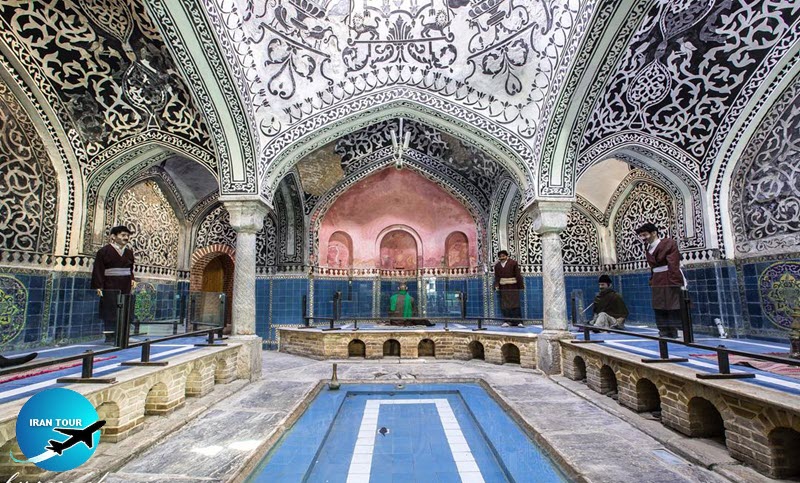 |
| Haj Agha Torab bath Nahavand City |
The floors were usually covered with cobblestone and were heated from underneath. The roofs contained several semi-domes covered with thick pieces of microscopic glasses in order to help sun rays to penetrate into the bathhouse more intensely. Thus to enter the bathhouse one has to go down a few steps. Larger ones had more steps. The entry to the bathhouse never faced the staircase directly in order to prevent cold air from entering it directly. A small corridor with a low ceiling led to the interior of the bathhouse and was reached by going down a few steps. The interior of the bathhouse was a large space with one or two wide platforms as well as a small cold water pool in the middle with a low fountain. When the bathhouse was for men's use, it was administered by the bathhouse master, otherwise, the master's wife handled the related affairs including taking charge of the clothing of the clients and administering the masseurs. The public bathhouses were usually open to men early in the morning and to women the rest of the day. A turning corridor led to a high-ceiling bathroom filled with dense steam all day long so that the walls were covered with small drops similar to that of sweat. The effect of the sunshine penetrating into the bathroom through the ceiling was similar to that created by a pipe whose upper radius is small and rather wide in the lower section. An amazing echo was created by any sound inside the bathroom. Private corners were available inside the bathroom for the clients wishing to wash away from others and along with their family members.
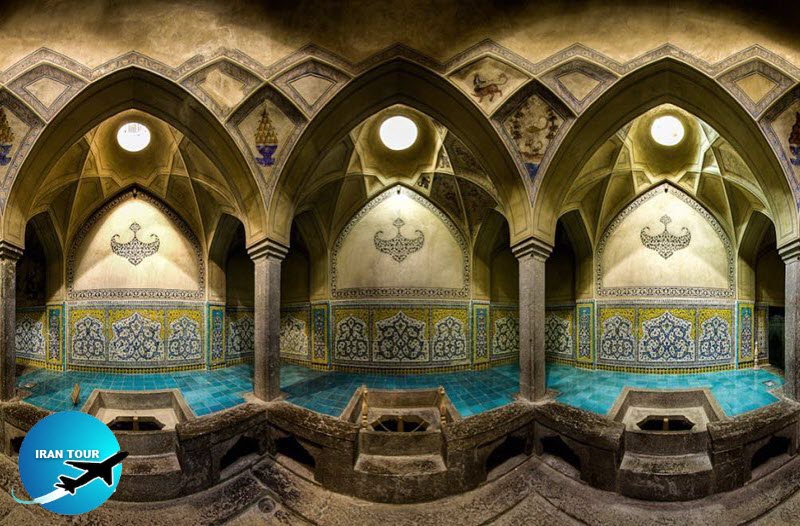 |
| Ganj Ali Khan bath Kerman |
There were usually two large pools, one filled with warm water and the other with cold water, which could be reached by going up a few stairs. A large pot of warm water stood at the end of the bathroom which was heated from underneath by burning dry leaves outside the bathhouse, A person was in charge of keeping the water warm and cleaning the bathhouse. I remember a big white iron utensil standing in the interior of our own bathroom measuring around 60-70 cms. It was apparently used by the cleaner for collecting the locks of hair spread all over and cleaning the floor. In the middle, it looked like a wide hexagon, while its upper and lower ends were narrow. Then I will talk about our own private bathroom. In those days, the family members used to go to the bathhouse once a week. The interval varied from 10-15 days for the families with a lower income.
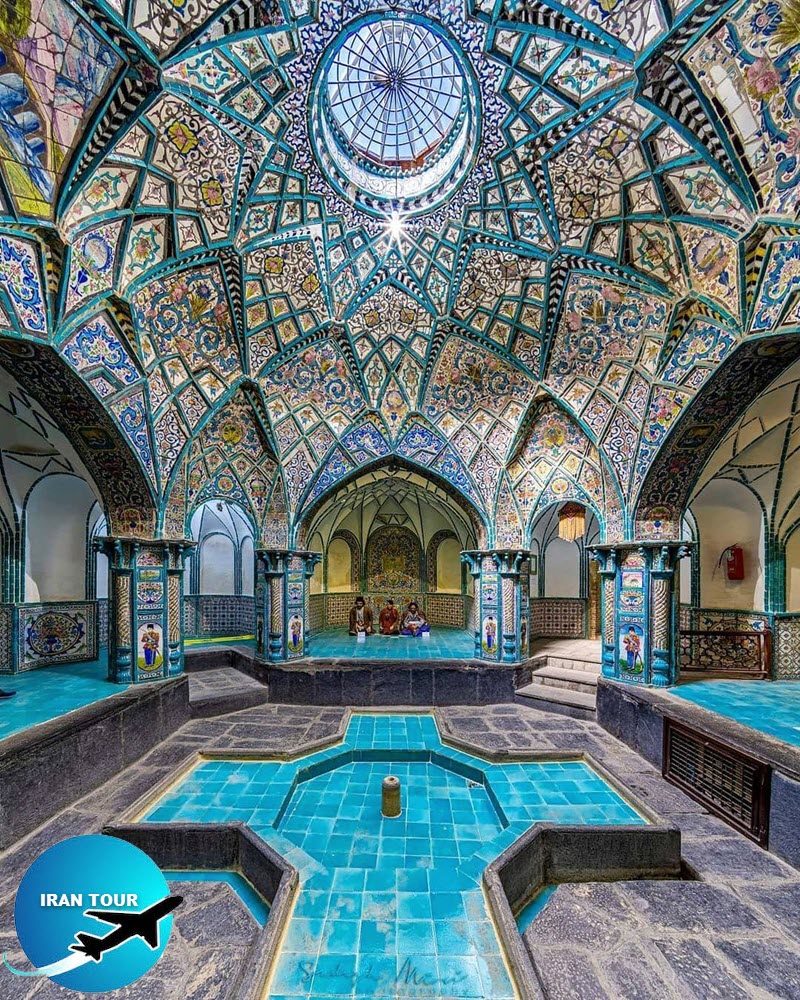 |
| Four season Bath - Arak City |
They prepared everything including clean clothing and towels among others one day earlier. The following day they set out for the bathhouse along with their children and a few acquaintances while carrying their sac. This was a happy occasion for Iranian women, who rarely ever left the house. While they washed themselves, they had a chance to have a good time. Going to the bathhouse was not only a duty approved by their husbands but provided them with an opportunity to relax and enjoy themselves. Besides this was quite acceptable by the community and no one could ever find fault with it. That's why the day when women went to the bathhouse was a valuable occasion and they did their best to make the most use of the opportunity. They had to go down many steps in order to reach the bathhouse. Once there, they used to greet the master's wife and gave her their sacs. They took their required things, wrapped their bathing clothes around their waist, and entered the bathroom. They also asked for their favorite traditional masseur before going in. Once the master's wife had free time, she entered the bathroom alone or along with the masseur called for.
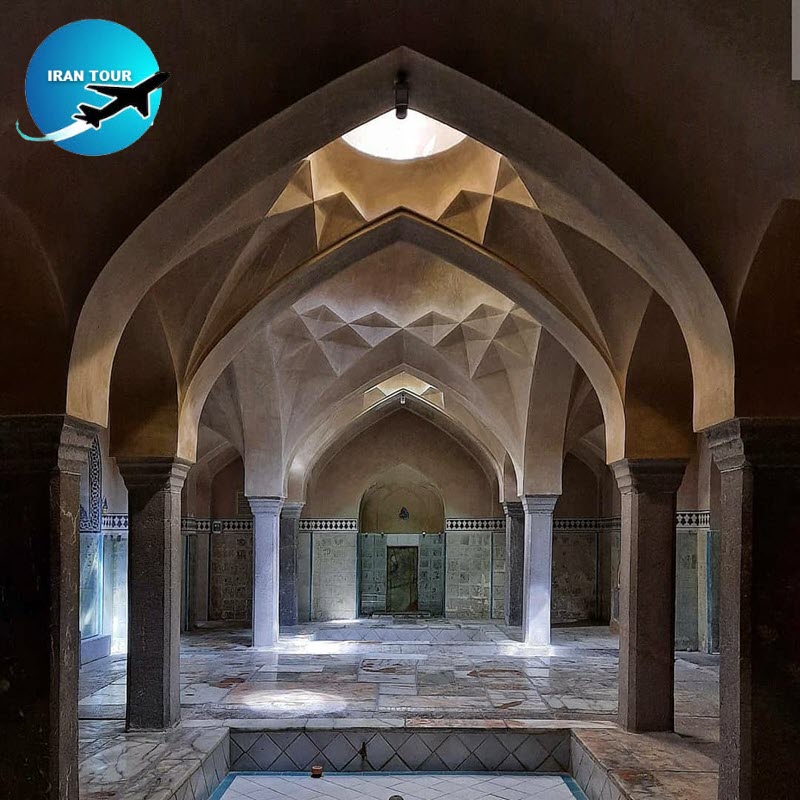 |
| Ali Gholi Agh Bath Isfahan |
Upon entering the bathroom, they took a seat among the groups already washing themselves. In larger bathhouses, there was someone who fetched warm water from the pool and filled the client's copper bowels. Women poured the water over their heads and body in the steam bathroom in order to soak and warm up themselves. If they had any child, they washed them. Then they waited for the masseuse to come and wash them. Meanwhile, they started talking with the families to whom they were introduced in the very same place and usually continued the discussion of the preceding week. It was a place where women could get an idea of what was going on around them and get away from their monotonous life. They were informed about the weddings and the dowries which resulted either in the brides' prosperity or disaster and divorces. They even talked about the transactions taking place in the surrounding market so that they could keep their husbands informed. That was where they made decisions about the marriage of their daughters and sons and had a chance to hear comments about their own behavior and that of their family.
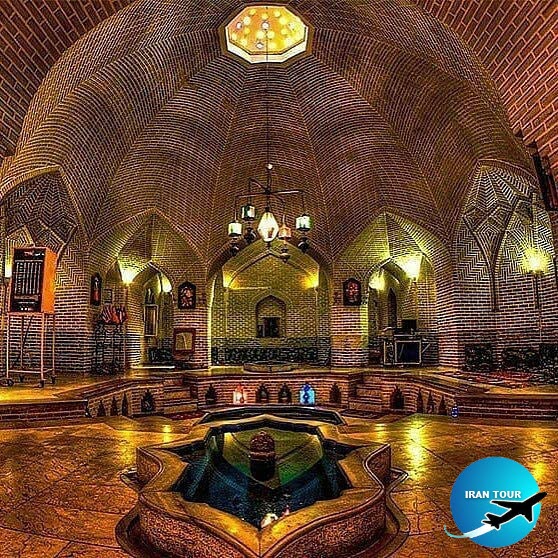 |
| Khan Bath Yazd |
In addition to sociability, taking a bath was quite enjoyable. First, they washed their hair with soap several times and rinsed it. Then the masseur put on the traditional glove-like flannel, put some gommage on it, and rubbed the client's body gently. The filth and dead cells of the body rolled up and dropped to the floor. Then they washed the client's body with a flannel soaked in soap. To wash their faces, they rubbed gommage on their hands and massaged their faces with their fingertips and the filth rolled down to the floor. They also rubbed their heels and toes with pumice-stone to make them soft. Then the masseur slowly poured water on the client's head and the client herself combed her hair to wash away the foam. Finally, she stood up and the masseur poured a big bowl full of water in order to rinse it. Then she poured water on her right shoulder and another on her left one. Two to three hours of washing in the bathroom's humid and hot air passed really fast. If someone wished to dye her hair with henna, it took a long time, in which case they ordered lunch and invited their friends over. They even made rendezvous a week earlier. Rice and stew, as well as soup, were not common foods taken in bathhouses.
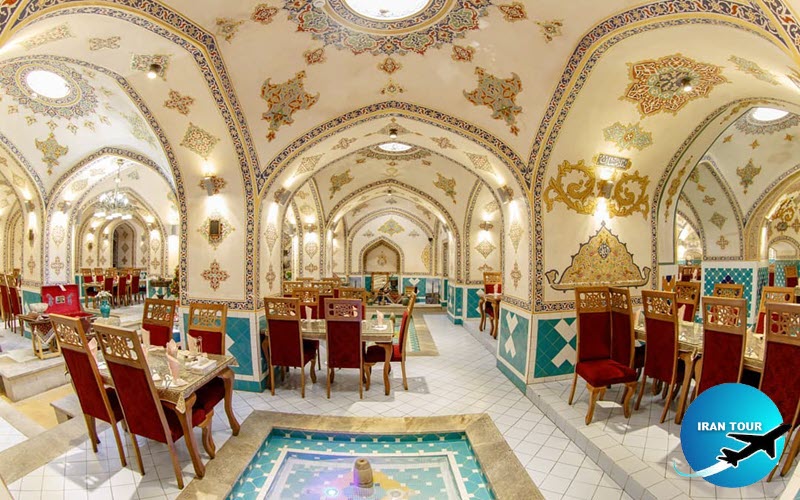 |
| Jarchi Bashi Bath Isfahan - Changed to restaurant |
Traditional food made from the meat along with a mixture of yogurt and cucumber, bread, cheese, vegetable, lettuce, vinegar, and pickles were quite suitable to be served in bathhouses. Dough (yogurt and water), syrups lemon, and other traditional beverages were commonly ordered together with food. At lunchtime, the masseur turned the copper bowl upside down and laid the lunch tray on it. The ladies took a break from washing, gathered around the food tree, and took their lunch while talking about various matters. In fact, going to bathhouses was considered by women as taking a rest. Therefore, they tried to make it longer. As far as I can remember before leaving for Tehran, there was a large bathhouse between the inner section of Mrs. Ezzatoldoleh's house and the garden in which we resided. I along with my mother, older sister, the youngest brother, my and my brother's nannies, and at least one individual from the household left for the bathhouse. Occasionally when breaks were taken from washing, we had a chance to fetch cold water in our small bowels and blow at the foam produced by rubbing the soap on our flannel. One day I and my sister quarreled over the bowel and started beating each other. Given she was older than me, she grabbed the bowel from me and I bit her arm. According to my mother, a drop of blood was observed on her arm. Only God knows whether that was the case! Anyway, both of us were hardly beaten by our mother and the echo of our cries and shouts could be heard all around. Though I don't remember anything about the bathhouse in Shiraz. I still have a clear image of the one in Isfahan which was quite small and near our house.
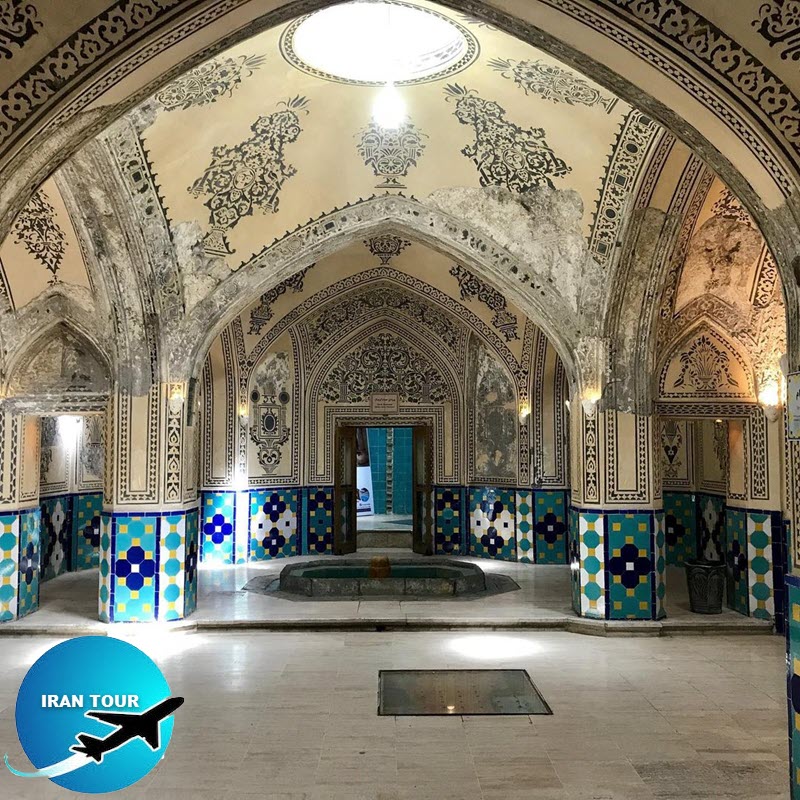 |
| Soltan Ahmad Bath - Kashan |
I was usually taken to the bathhouse alone by my nanny, where she dyed my eyebrows with henna in order to make them grow thicker. I presume that from her point of view I had no other flaw except my eyebrows which were not thick enough to make me look like a princess. After the birth of my younger sister, Lili, my nanny changed her mind to some extent, given that any time she referred to me she also praised Lili's princess-like eyes and eyebrows. After we left Isfahan for Tehran, a bathhouse was constructed in a space at the far end of our yard. A few steps led to a long low-ceiling corridor ending up in an iron door. On one side of the interior of the bathhouse, there was a wide platform covered with blue tiles. There was no small pool in the middle. Another iron door led to the bathroom through a turning corridor. The bathroom was bright and the walls were covered with stones. The warm water pool facing the door was located three steps above the floor and it was always full of limpid water. In a narrow space next to the pool one step below the floor, hot and cold water showers were installed.
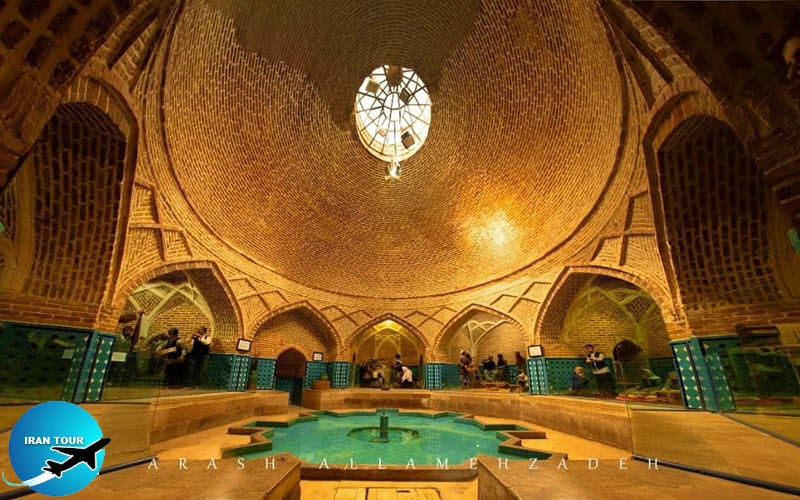 |
| Qajar bath Qazvin city |
Besides hot and cold water faucets stood somewhere in the bathroom. In those days, bathhouses were constructed between the outer and inner sections of the house. In case the bathhouse was erected in the interior section, the related furnace was set up beneath the central pool and could be reached from outside. It kept burning by putting in wood and dried leaves. In the evening everybody left the bathhouse since there was no lighting and electricity. Then the cleaner started cleaning the bathhouse by the light of an oil lamp. The genies allegedly taking control of the affairs at night were said to dislike seeing people moving around. During the night, we were careful not to go near the bathhouse. Even at times, we could hear sounds that were taken as the feet of genies pounding on the floor with their hair standing on their end as they were running around with their poisons. One might have stepped over their children unconsciously and provoked the mothers. Thus one should have actually been wary of going near them! We had a large family and a great number of the family members lived in the interior. So we had a schedule for taking a bath. On Sundays, it was the turn of my mother along with her children and household. On Fridays, Farman-Farma himself took a bath. The architecture of bathhouses changed after World War II. Given that washing oneself in public pools was unhealthy, they were totally eliminated and replaced by smaller private bathrooms. While they were warm and humid inside, there were hot and cold showers which made them quite pleasant. Besides skilled masseurs were always available. I have seen the publicity in magazines about beauty saloons and steam houses as well as a material called gommage used to clean the skin, while we have had it years ago.
- Details
- Category: What to see in IRAN
















